An Integrated Approach for Optimizing Geological Hydrogen Storage
在追求可持续能源转型和实现净零排放目标的过程中,地质氢储存(GHS)作为一种关键的能源储存技术应运而生。GHS涉及将可持续能源转化为氢气,并在能源需求低谷期将其注入地下岩层,然后在能源需求高峰期将其提取出来。为了确保每个储存地点的GHS 能力达到最佳状态,必须对操作参数进行精细调整,以适应每个储存地点的独特特征。为此,本研究建立了一个包含2000次储层尺度模拟的框架,旨在识别影响GHS性能的关键因素。通过多变量自适应回归样条(MARS)全局敏感性分析,研究发现主要的控制因素包括注入/生产速度、储层非均质性和储层厚度。
研究结果表明,注入/生产速度对氢气和水的累积产量有显著影响,而储层均质性则是控制氢气采收率(即产氢量与注氢量的比值)的主要因素。通过响应面分析,研究确定了每对重要控制因素对GHS性能指标的相互作用。研究发现,为了实现最佳的GHS效果,储层需要具有较低的非均质性程度(标准差小于1.2)、厚度小于55米,并且最小注入速率为21200千克/天。虽然这一注入速度可能会因储层大小和边界条件而有所不同,但它突出了考虑最小注入速度对于有效GHS的重要性。
最后,研究提出了相关联的预测模型,能够在信息有限的情况下对GHS性能进行粗略预测,从而快速筛选潜在的GHS地点。快速筛选将通过集中资源于更有希望的GHS地点,加速其表征和部署。
CMG软件的应用情况
在本研究中,CMG软件(版本2023.30)被用于建立一个三维(3D)储层模型,以模拟地质氢储存过程中的复杂动态。该模型完全饱和水,具有典型的砂岩储层和操作属性。模型中包含两个中心位置的井,分别作为注入井和生产井,垂直对齐并占据模型中点的网格块。通过模拟不同场景,研究了储层属性和操作变量之间的复杂动态关系。CMG软件的使用为研究提供了详细的氢气前缘运动和生产数据,帮助研究人员更好地理解地质氢储存的机制和面临的挑战。
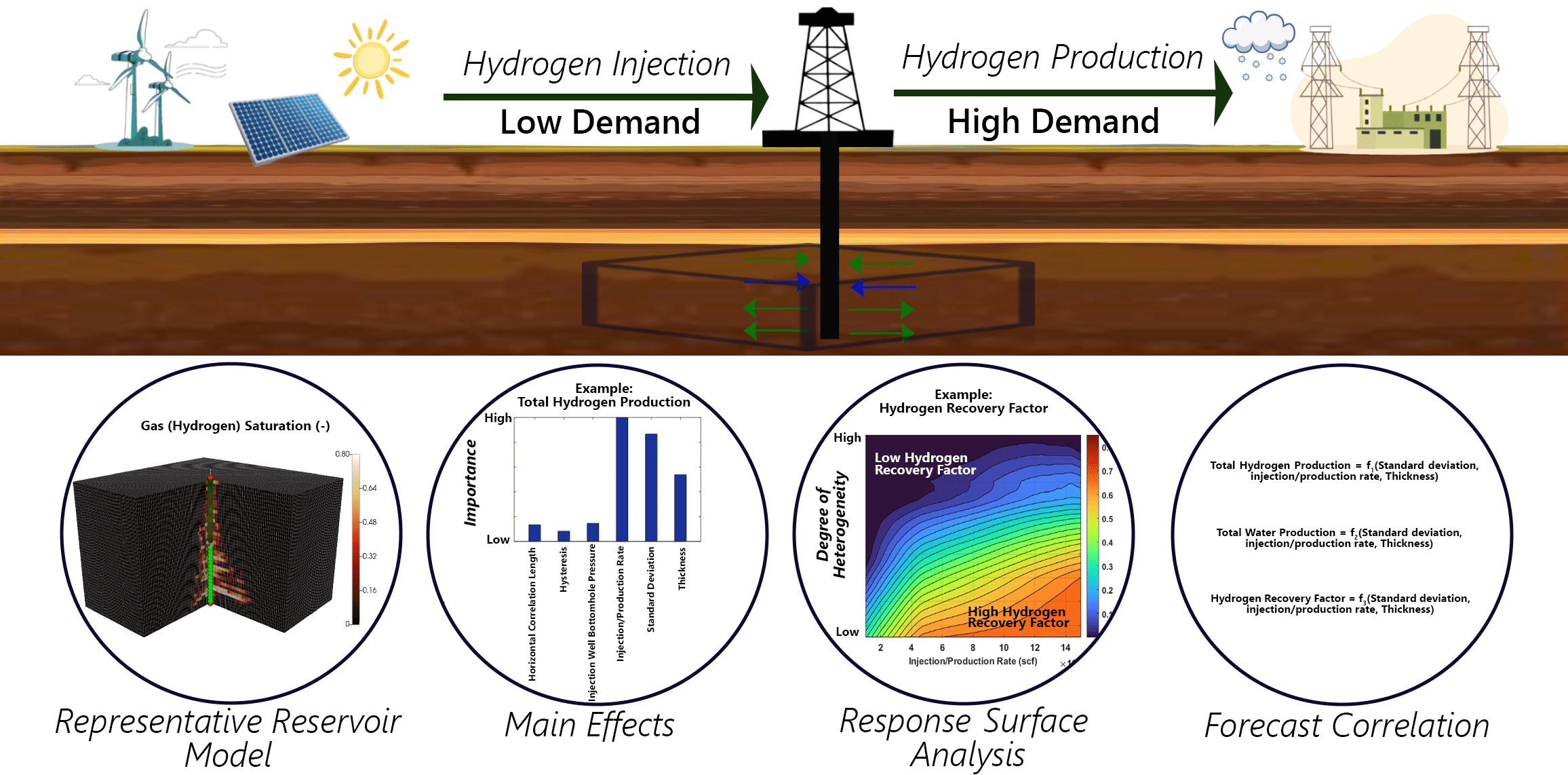
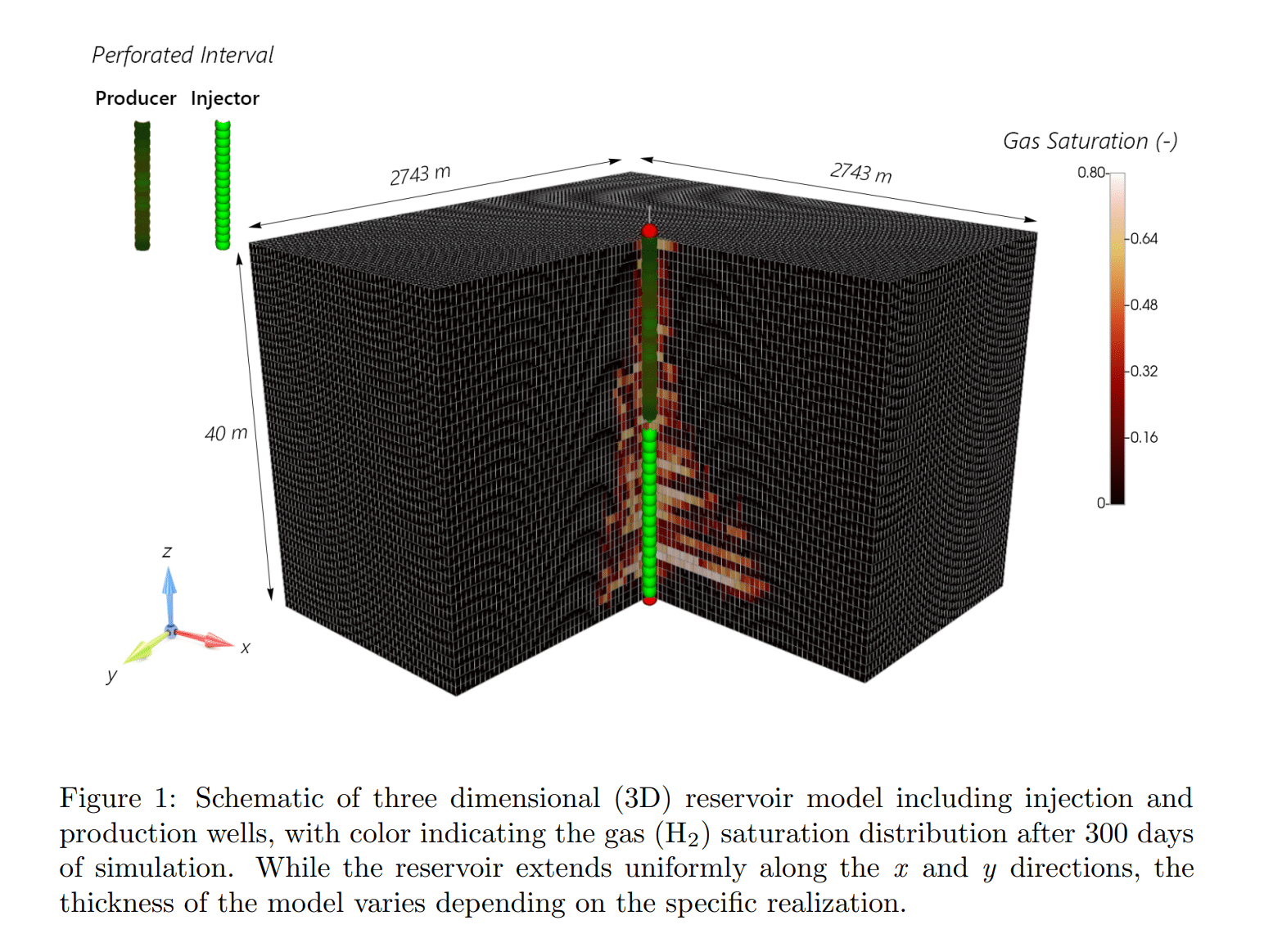
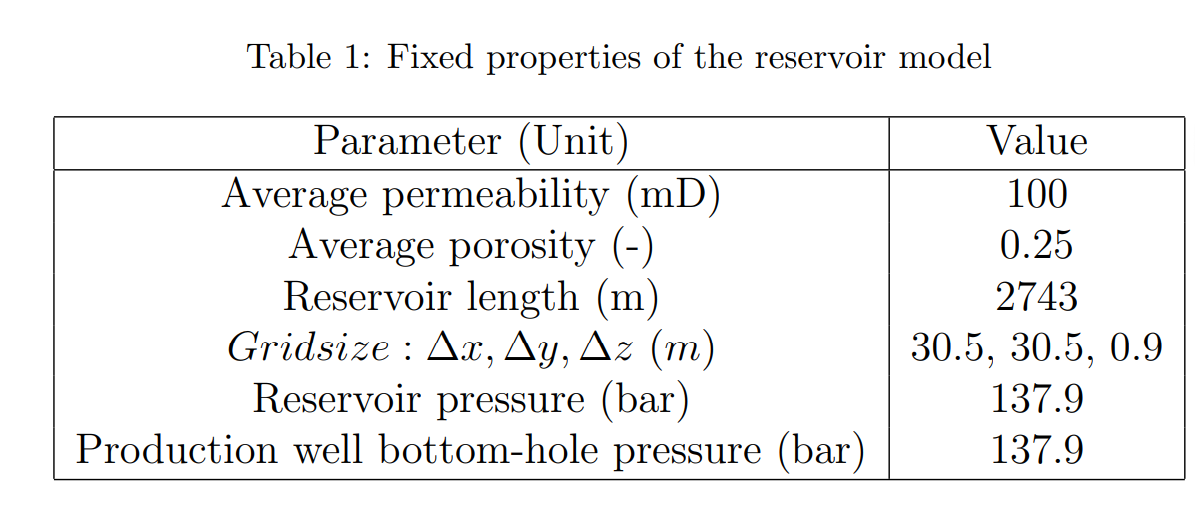


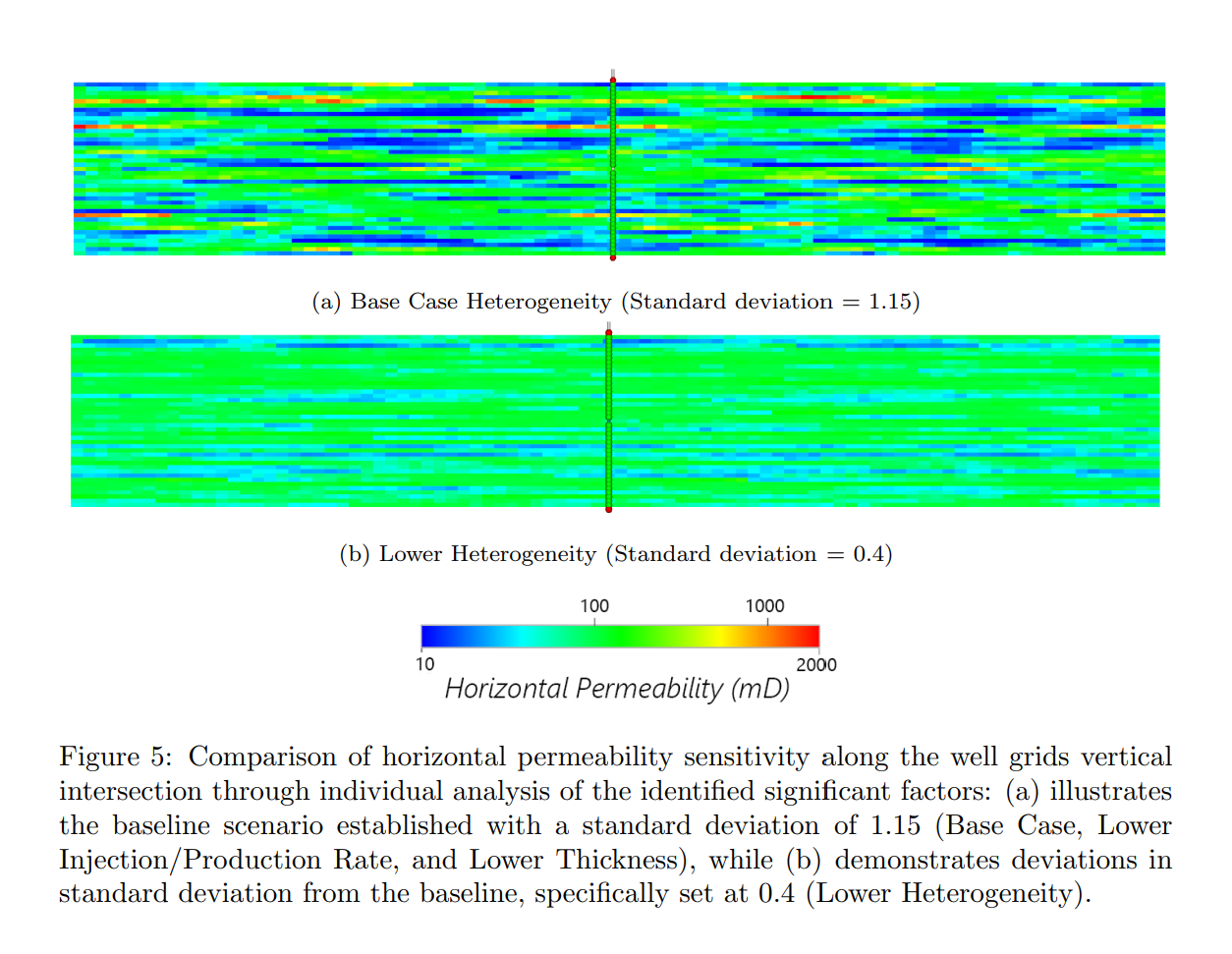
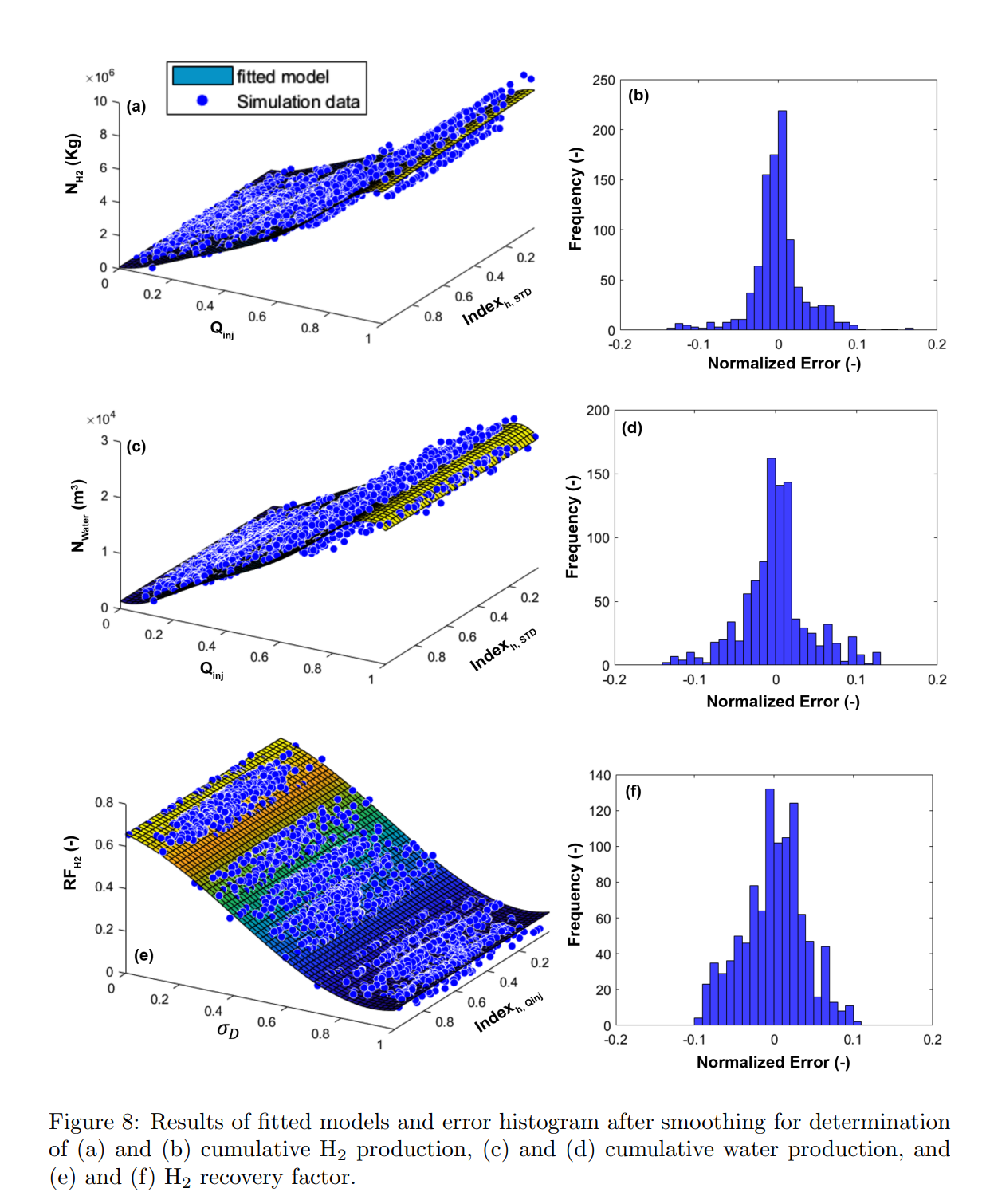
Abstract
In the pursuit of a sustainable energy transition and the achievement of netzero emissions goals, Geological Hydrogen (H2) Storage (GHS) emerges as a critical component. GHS involves converting sustainable energy into H2 and injecting it into underground formations during low energy demand periods, then extracting it during high energy demand periods. Rigorous investigations are crucial to fine-tune operational parameters tailored to the unique characteristics of each storage site, thereby ensuring optimal GHS functionality. To this end, we establish a framework comprising 2000 reservoir-scale simulations aimed at identifying the key determinants influencing GHS performance. Employing multivariate adaptive regression spline (MARS) global sensitivity analysis, we have discovered that the primary controlling factors include injection/production rates, reservoir heterogeneity, and reservoir thickness. Our findings reveal that while injection/production rates yield significant influence over cumulative H2 and water production, heterogeneity emerges as the dominant factor governing the H2 recovery factor, where the H2 recovery factor is equal to the ratio of produced H2 over injected H2. Through response surface analysis, we have determined the interactions between each pair of significant controlling factors on GHS performance metrics. We find that optimal GHS performance requires reservoirs with a low degree of heterogeneity (standard deviation < 1.2), thickness under 55 m, and a minimum injection rate of 21200 Kg/day. Although this injection rate may vary with reservoir size and boundary condition, it highlights the importance of considering the minimum injection rate for effective GHS. Finally, we present correlated associations capable of providing rough forecasts of GHS performance, leveraging limited information to allow rapid screening of potential GHS sites. Rapid screening will speed characterization and deployment by focusing resources on more promising GHS sites.
Keywords: Geological H2 storage (GHS), Reservoir properties, Operational condition, Optimization, GHS performance forecasting
作者单位
美国辛辛那提大学地质科学系
吉林大学建设工程学院、吉林大学地下环境智能模拟与预警研究所
